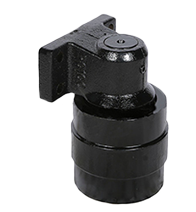Bulldozers have always been useful in a way that it helps construction sites from less manual man-power labor and it also cut the the days of work shorter. Moreover, how does this machine works? I may help out in giving details out of the components of the bulldozer and the uses of its designating parts. Let us sort and scrutinize those pieces and understand how it turns out to be an important individual from performing an assemblage of a bulldozer.
This machine has undergone changes and evolved many times. As time furthers, bulldozers have developed into new machines that are competent enough to do things that the original bulldozer was not capable of. The changes during the period where it was still underdeveloped were: load tractors were constructed through the removal of the blade and large bucket volume; hydraulic arms which will rise and lower the bucket were substituted. This unraveled greater contribution for scooping up the earth and loading the scooped materials into the truck. Thus, important improvements included better engines, more reliable drive trains, hydraulics that will facilitate enhanced precision on manipulation of the blade and automated controls for better tracks. There is also additional equipment of ripping claw that breaks up pavement or loosens rocky soil.
In evaluating the build of the bulldozer, it has two main component blades. The first one which is the ripper blade is the one that is located at the back of the bulldozer. As its name stands for, the ripper blade is used mainly for ripping and breaking up constructions. This so-called ripper is the one that assembles a claw, in other form; its variety is single ripper blade or called shank, which provides good leverage for heavy ripping jobs.
The second blade is the dozer blade. It is located at the front part of the bulldozer and its main function is for clearing obstacles, or it may also be used for moving mounds of earth, sand and general debris. It has three distinctions which are:
1. Straight blade-short blade without lateral curves, or side wings. It is designated for agricultural and forestry work such as fine grading.
2. Universal blade-it is more statuesque than the straight blade and has defined curves and side wings which allows it to carry loads of earth and debris.
3. Combination of both straight and universal blade-shorter than the universal blade and has a less emphasis on curves and has reduced wings. This is useful for quarry like moving large quantities of rocks.

Sign up to our newsletter for the construction machinery